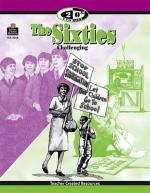|
This section contains 527 words (approx. 2 pages at 300 words per page) |

|
Labor at High Tide.
By the mid 1960s, labor's future appeared bright. Real wages were rising, union numbers were strong, and during the presidencies of Kennedy and Johnson organized labor felt it had friends in the White House. With the advent of the Great Society the AFLCIO leadership believed the administration was picking up where the New Deal had left off in providing benefits such as health care to the lower classes. Working hard for passage of Johnson's progressive domestic program, the AFL-CIO won plaudits from many liberals.
Changing Work Patterns.
Organized labor's apparent strength, however, was fleeting. During the 1960s the percentage of blue-collar workers (those generally in the manufacturing sector) as a proportion of the total workforce declined so that by 1970 the typical American worker was a white-collar employee. Fewer relatively high-paying industrial jobs were available for unskilled workers. Although...
|
This section contains 527 words (approx. 2 pages at 300 words per page) |

|




